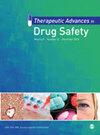他克莫司和卡泊芬净在不同CYP3A5基因型的中国肾移植患者中的药物相互作用
IF 3.4
3区 医学
Q2 PHARMACOLOGY & PHARMACY
引用次数: 0
摘要
背景:关于他克莫司与卡泊芬净的药物相互作用对不同CYP3A5基因型他克莫司药代动力学的影响,既往研究未见报道。目的:探讨卡泊芬净对不同CYP3A5基因型他克莫司血药浓度和剂量的影响。设计:2015年1月至2022年12月,我们在山东第一医科大学第一附属医院和山东省千佛山医院进行了一项回顾性队列研究。根据他克莫司是否与卡泊芬净联合,将所有肾移植患者分为联合组和非联合组。将患者细分为CYP3A5表达者(CYP3A5*1/*1或CYP3A5*1/*3)和CYP3A5非表达者(CYP3A5*3/*3)。方法:通过SPSS 22.0对联合组和非联合组的数据进行倾向评分匹配,以减少混杂因素。本研究共纳入了 200 名接受他克莫司联合卡泊芬净治疗或未接受卡泊芬净治疗的肾移植患者。采用独立样本双侧 t 检验和非参数检验对他克莫司的剂量校正谷浓度(C0/ D)和剂量需求(D)进行了统计分析,以研究对不同患者的影响。对于 CYP3A5 表达者,他克莫司的 C0/ D 值或 D 值在联合用药组和非联合用药组之间没有明显差异 ( p = 0.359; p = 0.851)。在 CYP3A5 非表达者中,联合用药组的他克莫司 C0/ D 值明显低于非联合用药组 ( p = 0.039),联合用药组的他克莫司每日所需剂量增加了 11.11%。在 CYP3A5 非表达者中,联合使用卡泊芬净对他克莫司的 C0/ D 值有显著影响。建议将 CYP3A5 非表达者的他克莫司体重调整后的日剂量增加约 10%,以确保他克莫司用药的安全性。本文章由计算机程序翻译,如有差异,请以英文原文为准。
Drug–drug interaction between tacrolimus and caspofungin in Chinese kidney transplant patients with different CYP3A5 genotypes
Background:The effect of drug–drug interaction between tacrolimus and caspofungin on the pharmacokinetics of tacrolimus in different CYP3A5 genotypes has not been reported in previous studies.Objectives:To investigate the effect of caspofungin on the blood concentration and dose of tacrolimus under different CYP3A5 genotypes.Design:We conducted a retrospective cohort study in The First Affiliated Hospital of Shandong First Medical University and Shandong Provincial Qianfoshan Hospital from January 2015 to December 2022. All kidney transplant patients were divided into the combination or non-combination group based on whether tacrolimus was combined with caspofungin or not. Patients were subdivided into CYP3A5 expressers ( CYP3A5*1/*1 or CYP3A5*1/*3) and CYP3A5 non-expressers ( CYP3A5*3/*3).Methods:Data from the combination and the non-combination groups were matched with propensity scores to reduce confounding by SPSS 22.0. A total of 200 kidney transplant patients receiving tacrolimus combined with caspofungin or not were enrolled in this study. Statistical analysis was conducted on the dose-corrected trough concentrations ( C0 / D) and dose requirements ( D) of tacrolimus using independent sample two-sided t-test and nonparametric tests to investigate the impact on patients with different.Results:In this study, the C0 / D values of tacrolimus were not significantly different between the combination and non-combination groups ( p = 0.054). For CYP3A5 expressers, there was no significant difference in tacrolimus C0 / D or D values between the combination and non-combination groups ( p = 0.359; p = 0.851). In CYP3A5 nonexpressers, the C0 / D values of tacrolimus were significantly lower in the combination than in the non-combination groups ( p = 0.039), and the required daily dose of tacrolimus was increased by 11.11% in the combination group.Conclusion:Co-administration of caspofungin reduced tacrolimus blood levels and elevated the required daily dose of tacrolimus. In CYP3A5 non-expressers, co-administration of caspofungin had a significant effect on tacrolimus C0 / D values. An approximate 10% increase in the weight-adjusted daily dose of tacrolimus in CYP3A5 non-expressers is recommended to ensure the safety of tacrolimus administration.
求助全文
通过发布文献求助,成功后即可免费获取论文全文。
去求助
来源期刊

Therapeutic Advances in Drug Safety
Medicine-Pharmacology (medical)
CiteScore
6.70
自引率
4.50%
发文量
31
审稿时长
9 weeks
期刊介绍:
Therapeutic Advances in Drug Safety delivers the highest quality peer-reviewed articles, reviews, and scholarly comment on pioneering efforts and innovative studies pertaining to the safe use of drugs in patients.
The journal has a strong clinical and pharmacological focus and is aimed at clinicians and researchers in drug safety, providing a forum in print and online for publishing the highest quality articles in this area. The editors welcome articles of current interest on research across all areas of drug safety, including therapeutic drug monitoring, pharmacoepidemiology, adverse drug reactions, drug interactions, pharmacokinetics, pharmacovigilance, medication/prescribing errors, risk management, ethics and regulation.
 求助内容:
求助内容: 应助结果提醒方式:
应助结果提醒方式:


